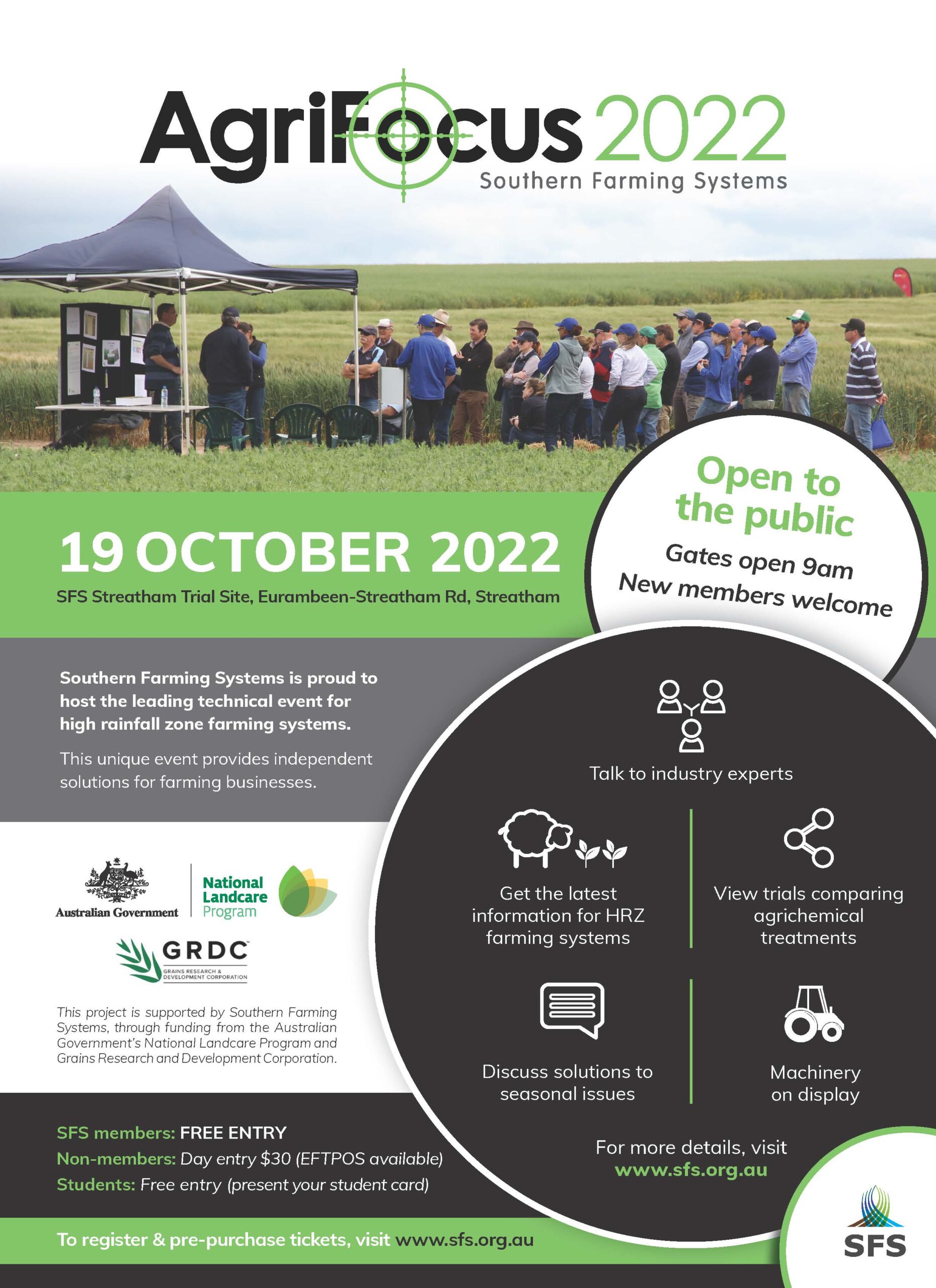
Harvest Weed Seed Control
This harvest, growers could be getting a head-start on next year’s weed problem by adding harvest weed seed control (HWSC) to their repertoire of weed management strategies. That’s the message being promoted by researchers and consultants because large numbers of the seeds of problem weeds species, such as annual ryegrass, can be captured and destroyed by these techniques.
‘Harvest weed seed control’ is an umbrella term that refers to a range of options at growers’ disposal that destroy the weed seeds that are picked up by a header during normal harvest operations. It includes options such as weed seed impact mills, narrow windrow burning, chaff carts and chaff decking, among others.
Although the environment of the high rainfall zone (HRZ) in the southern grain belt is cooler and wetter than much of country, HWSC has a part to play here too. GRDC-funded research conducted by Southern Farming Systems and project partners showed that even expensive technologies can pay for themselves in the long-term in a weedy HRZ paddock. Cheap technologies were nearly always profitable, according to simulations in a computer model.
However, there are a few key differences in the Southern HRZ that should be considered:
- HWSC is less effective in the Southern HRZ because harvest begins later in this cool environment, annual ryegrass has more time to shed its seeds. Where 70% of weed seeds could be captured in places like Western Australia, only 30% will be captured in the Southern HRZ. This can still be a profitable addition to weed control, but don’t expect drastic changes to weed numbers in one year.
- Bulky crops in the region make it difficult to harvest at low heights of the recommended 15cm above the soil. Fortunately, most HRZ crops are bulky enough to keep weed seeds above 30cm, reducing the need to cut very low to capture available weed seeds. Cutting slightly higher will also help to reduce the costs associated with using HWSC.
- Growers in the Southern HRZ should pay very careful attention to the extra costs associated with HWSC to ensure that it is a profitable decision for their business. Costs to estimate are capital costs, extra wear-and-tear on machinery, extra fuel usage, and most of all, extra time needed to harvest while using HWSC.
For more information on the research findings visit www.sfs.org.au/publications or to receive a free hard copy booklet contact James Manson, SFS E: jmanson@sfs.org.au
HWSC is an exciting space with rapid developments in the technology being made every year. Many models of each technology are now commercially available, and several can be made at home following instructions available online. Growers who have annual ryegrass ‘mostly’ under control could consider adopting the simpler and more affordable HWSC tactics. However, all growers should keep an eye on this evolving and developing space.




